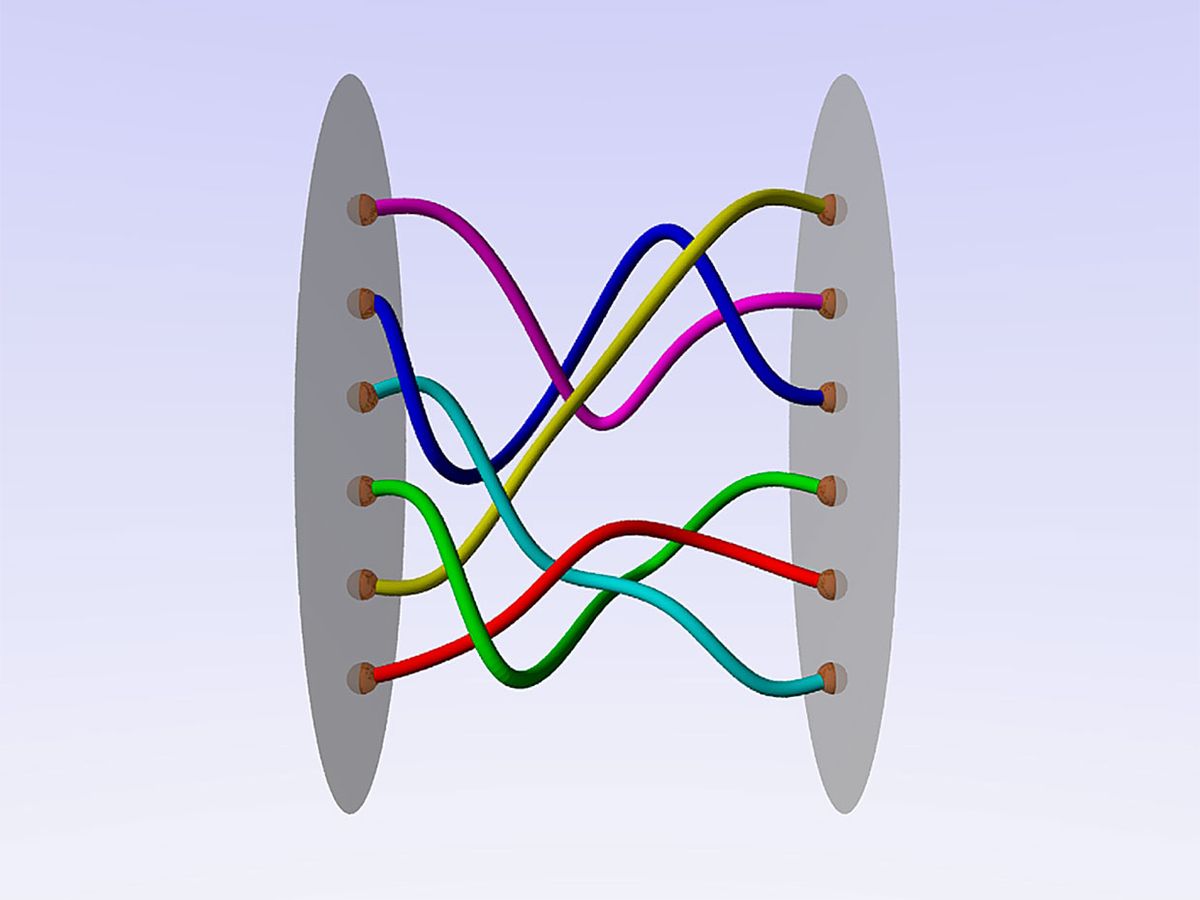
It’s not yet possible to build a general-purpose quantum computer with enough quantum bits (qubits) to do anything useful, but many researchers hope eventually to achieve that goal. They’re mostly using one of two strategies to store and manipulate qubits: superconducting loops or trapped ions. Both of these approaches are prone to error, though, making it necessary to build in much redundancy so that the needed error correction can be done. It might ultimately require thousands of physical qubits working together to make up a single error-corrected logical qubit. And that could make it impossible to construct a general-purpose quantum computer.
That’s why some researchers (in particular, some working at Microsoft) have long considered a third strategy: building a “topological” quantum computer, which, if it were ever to come to pass, would have qubits that were much less prone to error. Constructing a topological quantum computer would, however, be much harder than what’s being explored now with superconducting loops and trapped ions. Indeed, it’s very hard even to describe what a topological supercomputer uses for qubits.
If you try looking up the answer on Wikipedia, you’ll be faced with a wall of jargon that might make you suspect that Alan Sokal is playing another joke: “A topological quantum computer is a theoretical quantum computer that employs two-dimensional quasiparticles called anyons, whose world lines pass around one another to form braids in a three-dimensional spacetime….” As much as it resembles a line from a bad science fiction film, this sentence, in fact, describes a serious proposition for a way to build a quantum computer. At some point in the future when I understand it more, I promise to travel back through spacetime and revise this paragraph to make the concept abundantly clear.
In the meantime, let me share news of a development that could one day make it easier to build a topological quantum computer. For that, you need topological qubits, and to construct topological qubits, you need a very special physical substrate. While it’s possible to construct such a substrate using thin layers of different materials, a better approach might be to use a substance that in bulk acts as what is known as a topological superconductor.
“Those are very rare,” says Nick Butch, who is a condensed-matter physicist at the National Institute of Standards and Technology and also an adjunct associate professor of physics at the University of Maryland. He and his colleagues study new and unique types of superconductors, and they believe that they have discovered one that may indeed prove to be a topological superconductor, uranium ditelluride. Their work is published online today in the journal Science.
Butch and his colleagues decided to investigate uranium ditelluride because they suspected that it might be magnetic at very low temperatures, ones approaching absolute zero. It turns out that it isn’t magnetic at such low temperatures, but to their surprise, the researchers found that it becomes a superconductor. “This was quite an accident,” says Butch.
The surprises continued as they studied the new superconductor further. You see, superconductors stop superconducting when subjected to a magnetic field that exceeds some critical value. For a typical superconductor, the critical magnetic field intensity might be a few teslas. But uranium ditelluride remains a superconductor in magnetic fields as high as 20 T. Indeed, the researchers were unable to create a magnetic field of sufficient intensity in their laboratory to quash its superconductivity.
This experimental observation implies that the superconductivity of uranium telluride comes about in a special way. Let me explain. Superconductors conduct electricity without resistance because the current-carrying electrons pair up to form what are known as Cooper pairs (after Leon Cooper, who with John Bardeen and John Robert Schrieffer developed the first microscopic theory of superconductivity in 1957). In most superconductors, the two electrons in a Cooper pair will have opposing “spins”—a quantum mechanical property that describes the particle’s inherent magnetism. In a few odd superconductors, though, the electrons in these Cooper pairs will have spins that point in the same direction, which for complicated reasons is called a spin triplet state.
Butch explains that “a large subset of those [superconductors] that have spin triplets are topological superconductors.” That’s why he and his colleagues are so excited about their recent chance discovery: If they have indeed stumbled on a material that is a topological superconductor, it may one day serve as the basis for building topological qubits.
Sure, that’s a lot of ifs. And Butch readily admits that it is not yet completely clear that the Cooper pairs in superconducting uranium ditelluride are in a triplet state or, if so, that the material is indeed a topological superconductor. “We’ve built a circumstantial case” for that, he says.
What if that case falls apart with further measurements? Or worse, what if that case holds up, as seems likely, but the notion of topological quantum computing fizzles for other reasons, leaving no obvious application for the new material? Would superconducting uranium ditelluride still be interesting? Butch answers in a way you might expect from a basic-science researcher: “It’s interesting because it exists.”
David Schneider is a former editor at IEEE Spectrum, and continues to contribute Hands On articles. He holds a bachelor's degree in geology from Yale, a master's in engineering from UC Berkeley, and a doctorate in geology from Columbia.



